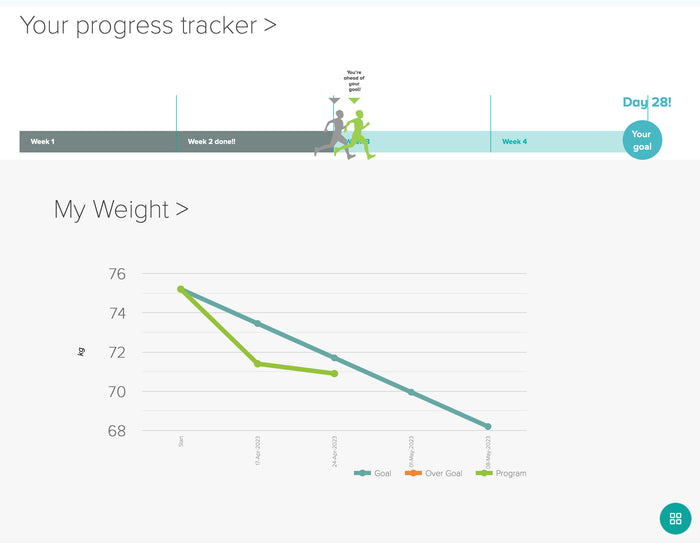Whether your goals involve losing weight, improving fitness, cognition and longevity, mood, energy, or simply staying healthy, being metabolically flexible is a distinct advantage.
While conventional ‘diet & exercise’ may work temporarily, it’s important to know that you can achieve better results by changing the way your metabolism functions.
Becoming fat adapted is a shift in your metabolism, resulting in faster, easier fat loss, increased muscle gain, reduced disease risk and higher energy and performance levels.
What does metabolic flexibility mean?
Your body can burn one of two fuel sources - either glucose or stored fat.
Being fat adapted is a metabolic state where your body becomes very efficient at using stored body fat as your primary fuel source. Being in this state not only improves your metabolic health, but it also naturally curbs appetite and cravings, may stabilise mood, reduce inflammation, increases energy levels, and triggers rapid fat loss. Scientists call this ‘metabolic flexibility’.
A well-functioning metabolism is primed to readily switch between fuel sources as required. An unhealthy metabolism is referred to as ‘metabolic inflexibility’, where your body is reliant on the glucose rollercoaster for fuel and is unable to access stored fat, despite excessive stores being available.
Isn’t this the same as a keto diet?
While often (erroneously) thought of as the same thing, being fat adapted and keto-focussed diets are quite different. You can access stored fat for fuel without following a keto diet. The state of ketosis is the result of a diet restricted in carbohydrates, where your liver begins to produce ketones to fuel your brain. While ketosis is not a negative state (unless you are a type 1 diabetic) and it’s your body’s natural solution to a reduction in carbs or fasting, entering a ketogenic state is not necessary for fat adaptation. Fat burning can occur with or without the presence of ketone bodies.
Some of the advantages of fat adaptation:
- Makes fat loss faster and easier to maintain by boosting your ability to access fat for fuel.
- You’ll be less likely to regain weight once adapted
- May slow biological aging – physical and cognitive
- May assist in increasing fat burn at rest, as well as during activity
- Increases physical performance (strength and endurance). Higher fat oxidation is associated with higher aerobic fitness and faster recovery.
- Increased insulin sensitivity and reduced risk of common diseases, such as type 2 diabetes, insulin resistance, cardiovascular disease, cancer and fatty liver.
What will you experience when you’re fat adapted?
While some of us may become highly fat adapted, others may have a total inability to access fat for fuel. Most of us fall somewhere in between and all of us have the option of changing this with our diet and lifestyle choices.
Once fat adapted, weight/fat loss is quick and simple. If you find you plateau, it’s usually due to a higher use of glucose and lower fat adaptation.
You will have no difficulty with fasting, or time-restricted eating, and hunger and cravings will subside. No more urgent hunger, lethargy, fogginess, or irritability if you miss a meal.
Your pathology markers, such as glucose, insulin and HBA1c (all markers for blood glucose regulation) will all be within the optimal level (<5.0).
You’ll reduce the likelihood of hitting the wall in intense exercise. Being fat adapted provides you with ready access to an abundant and efficient fuel source – stored fat – so you will be unlikely to run low on energy.
There is a science to becoming fat adapted, which is one of the primary focusses of our programs. The time it takes to adapt will vary for everyone, with many influencing factors, such as your current state of health and ability to commit to making the necessary changes.
























